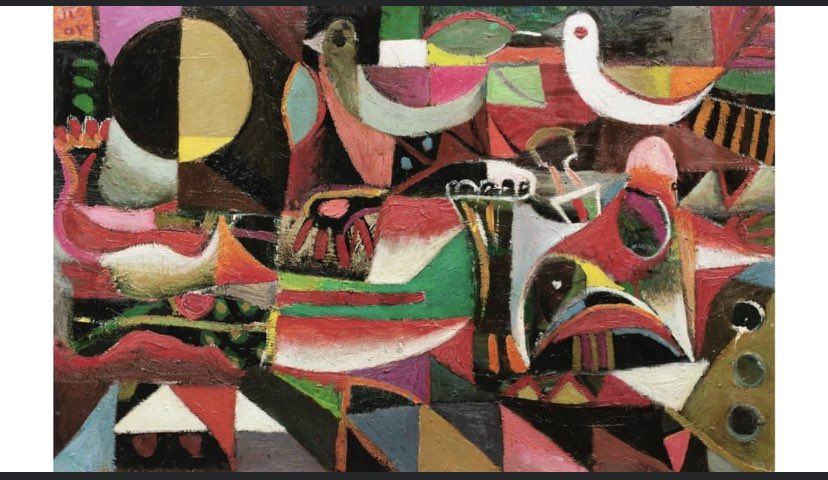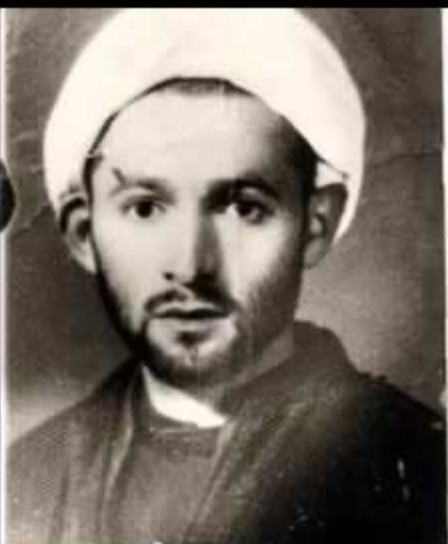Shared from Ahmed Naji #Karbala in #IraqiArt Shaker Hassan Al Said (Iraqi, 1925-2004), 𝘡𝘦𝘪𝘯 𝘈𝘭 𝘈𝘣𝘦𝘥𝘪𝘯, circa 1955, oil on board, 75cm × 44cm. Image courtesy of @christiesdubai 1/ 

From Ahmed Naji: Al Said explored a number of elements in the material culture of the tragedy of Karbala visible in posters, Muharram Procession paraphernalia and performances 2/
2- Corpse with Two Doves, 1953, oil on panel, 50cm x 76cm, courtesy of Sotheby's (private collection) 4/ 

The tragedy of Karbala represents humankind's struggle between good versus evil. This painting by Kadhim Hayder in 1957 titled مصرع الانسان Death with Struggle of Man, 1957, oil on canvas, 80cm x 120cm, courtesy of the National Museum of Modern Art, Baghdad, Iraq 7/ 

Check out Ahmed Naji’s book Under the Palm Trees books.google.co.uk/books/about/Un… 8/
• • •
Missing some Tweet in this thread? You can try to
force a refresh



















